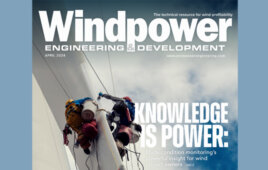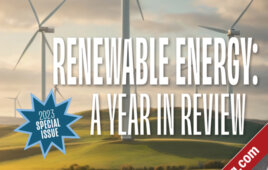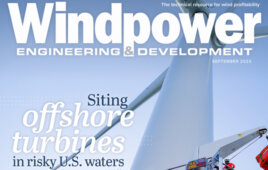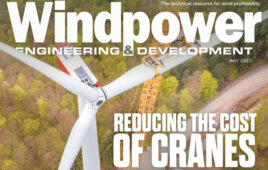THE RISE OF WIND POWER
“GREAT THINGS NEVER CAME FROM COMFORT ZONES,” stated a recent advertisement in a community newspaper. The statement could have referred to the wind-power industry. The American Wind Energy Association (AWEA) recently released its 2018 third-quarter report, noting that seven states are near doubling their capacity to generate electricity from the wind.
These include onshore projects under advanced development in Arkansas, Nebraska, New Mexico, South Dakota and Wyoming — and the coastal states of Maryland and Massachusetts, where offshore wind is set to scale up in a big way. Yes, the offshore wind industry is coming to America. Such progress only happens when policymakers, investors, and developers are striving for change outside of their comfort zones.
U.S. wind farms represent 90,550-plus megawatts (MW) of electricity generating capacity, according to AWEA. According to the U.S. Department of Energy (DOE), the offshore wind project development pipeline includes more than 25,000 MW of planned generating capacity, with 2,000 MW expected to begin commercial operation by 2023 or sooner. New York, New Jersey, and Massachusetts have made big commitments to offshore wind. California is anticipating floating wind and the West Coast’s first offshore auction (see page 26).
What’s more is the far-reaching economic impact the offshore wind industry is expected to bring to the country. New analysis from business group E2 found that offshore wind could triple the number of wind jobs in five Atlantic coast states (think some 25,000 construction and operations jobs), substantially benefitting the U.S. economy. That’s in addition to the 105,000-plus workers who already have wind-powered careers in one of each of the 50 states.
The last few years have brought unprecedented wind growth and development to the United States. Project costs have continued to fall and stay low. In fact, after topping out at 7¢/kWh for power purchase agreements (PPAs) in 2009, the national average price of wind PPAs has dropped to around 2¢/kWh, reports the DOE. However, even as the production tax credits phase-out (the PTC is scheduled to decrease annually until 2019 when the credit received reaches 40% giving those projects until 2023 to complete) the sector continues to advance and evolve in new ways.
- Expect more powerful turbines. The average utilityscale wind turbine installed in 2017 was rated at 2.32 MW, according to AWEA. However, new orders for wind include land-based turbines above 4 MW for the first time in the country. Manufacturers are also pushing the capacity of offshore turbines. For example in 2018, MHI Vestas launched its first-ever 10-MW wind turbine and GE introduced the 12-MW Haliade-X.
- The future is floating. Researchers are evaluating floating wind structures, which allow siting offshore turbines in deeper water where fixed-foundations are unfeasible — and where roughly 60% of offshore wind resources are found in the U.S. America’s first floating offshore wind farm is expected in Northern California.
- Turbines are getting smarter. Digitally connected sensors and AI-driven software mean turbines can anticipate and react to changing conditions, predict component longevity, and communicate with remote data centers or the grid. Artificial intelligence will increasingly automate O&M operations over the next several years, boosting productivity and saving costs, suggests a “Making Renewables Smarter” report from DNV GL.
- Corporations are buying clean power. According to a market outlook report from Bloomberg NEF‘s, corporations purchased more than 7 GW of renewables in 2018 (60% of which was in the U.S.), surpassing the previous year’s record of 5.4 GW. Currently, Facebook leads the market and has committed to 100% clean energy by 2020, recently signing for more than 3 GW of new wind and solar energy.
- Wind supports farmers. Wind energy is a droughtresistant cash crop that farmers may rely on. Wind provides an advantage for farmers and ranchers who volunteer small portions of their land for turbine placement in exchange for lease payments that total some $267 million a year, says AWEA.
Growth in wind power is expected to continue for the foreseeable future, so it’s best to avoid getting too comfortable with current advances — more are certainly on the way soon. “The wind is always blowing in the U.S. and the latest wind-turbine technology helps affordably and reliably put more of that natural resource to work,” said Kiernan in an AWEA Q3 release. That is encouraging news.
MICHELLE FROESE
Editor
@ForRenewables
Filed Under: Digital issues





I fully support the installation of these wind farms. SOME body has got t get busy and supply our society with the power we need.